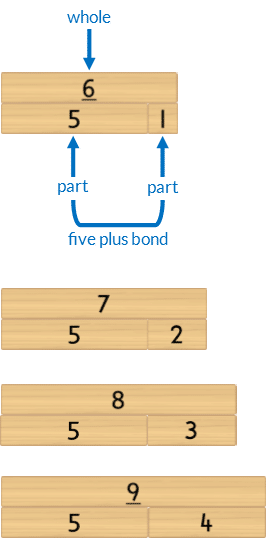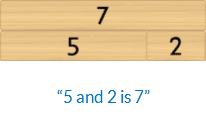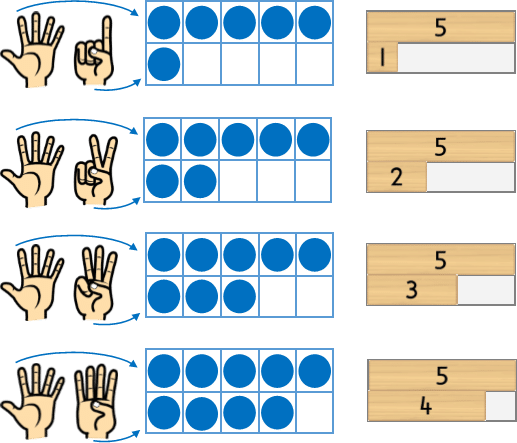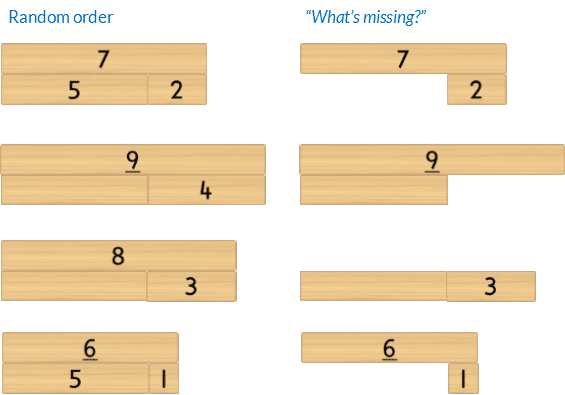21) Bonds
Five Plus Bonds: Building a Wall
Mathematics
Develop the concept of 6,7,8 and 9 as made of 5 plus another part.

Language
- five plus bond: a bond of five and one other part makes the whole.
- addition as “and”
- equals as “is”


Differentiation
A little easier
Ten Frame (Section Two)
Support recall by using fingers to develop five plus fluency. Explicitly relate each hand to the relevant row of counters on the ten frame.

Finger subitising to support 5 plus bonds shown with right hand dominance. The fingers on the right hand change each time.
Students with fine motor difficulties may not be able to separate fingers easily or use their thumb to hold other fingers. Do not insist these students use a representation that is difficult for them. Consult their occupational therapist for advice.
Click this link to read Teacher Notes for more information about using counters and fingers to support learning number bonds.
Working Memory Support: desk visual
Click to download the Five Plus Bonds Part-Part-Whole Diagrams desk visual.

These part-part-whole diagrams can be stuck to the top of student’s desk, as a desk visual, until students are fluent recalling these facts. Students with memory or processing difficulties can benefit from having visuals as permanent prompts.
Click this link to read Teacher Notes for more ideas about “Using Part-Part-Whole Desk Visuals” to support students.
A little harder
Recall Practice: missing Bond Block
In pairs, students to order their blocks on the desk as per the activity board. Instruct one student to close their eyes, whilst their partner removes one block from each part-part-whole build. The other student has to identify which blocks were removed.

Develop fluency by moving the arrangements out of ascending order. Then identify what’s missing.

Recall Practice: desk visual
Download the Five Plus Bonds part-part-whole diagrams desk visual.
- Cover different numbers to practice recall.

- When students are fluent identifying missing numbers in counting order cut the strip into single cards. Randomise the order of the diagrams and practise recall covering different numbers.

Ten Frame: adjusting counters
An activity for individual students.
The teacher models filling a ten frame orientated horizontally, from left to right, top row first to make 6,7,8,9. Draw attention to the number of spaces left to fill the frame relating this to bonds of 10.

The teacher calls out 6,7,8,9 in random order. Students fill their frame with this amount of counters. Students do NOT clear the frame of counters after making each number. Instead students alter the number of counters on the frame to make the new quantity. Doing this helps students learn about the comparative size of numbers. For example, 8 is 2 greater than 6.


Progression
In the next activity students develop fluency with five plus bonds, representing them in a variety of ways, when they are presented in random order. Go to
Activity 22
Five Plus Bonds: Bonds, Multiple Representations
